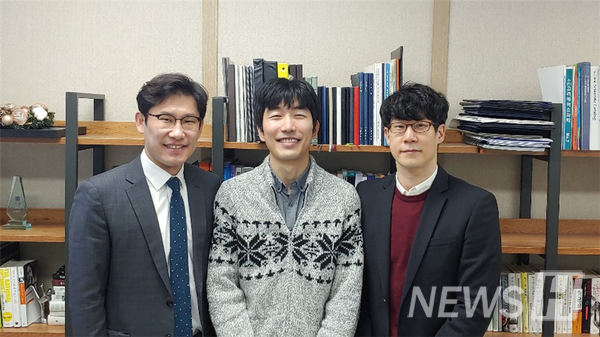Published in the world's most prestigious journal, Science
Can be used to secure original technology for semiconductors and displays in the future
Snow from the sky and the salt from the sea has one thing in common. Both start from small particles to form a large matter. For instance, water vapor in the air freezes and creates a very small particle called "cell nucleus," and the surrounding vapor starts to stick to this particle, creating larger crystals that become large enough to be visible.
In order for atoms to gather and form matter, they have to go through a process called "nucleation." However, the process takes place at a high speed in very fine areas, with atoms being very small (Å. 1 in 10 billion), and approximately at a speed of at least one-hundredth of a second. Until now, the mechanism of nuclear generation has not been clarified.
As such, the challenge of nuclear generation which has continued since the late 1800s has finally been resolved, according to Science, the world's most prestigious journal.

An international joint research team led by Professor Lee Won-chul, Professor Hong Seok-jun, Doctor Jeon Seong-ho of Hanyang University ERICA's Department of Mechanical Engineering, and Professor Park Jung-won (IBS nano-particles research team member) from Seoul National University's Department of Chemical and Biology Engineering and Lawrence Berkeley National Laboratory (LBNL) succeeded in observing the nuclear production at an atomic level.
To observe the process, they synthesized a nanomaterial that emits gold atoms when it receives an electron beam over a graphene membrane that is as thin as an atom. The synthesized specimen was successfully observed for the first time in the world by using the world's best-performing electron microscope owned by the Lawrence Berkeley National Laboratory in America. Hence, the research joint team was able to capture the moment when gold atoms gathered to produce nanocrystals on camera with ultra-fast (1000th of a second) and ultra-high resolution (individual atoms identifiable).
According to the observed results, the nuclear generation process was carried out with the gold atoms reversibly repeating the two states, "a disorderly lump structure" and "a crystal structure in which atoms were aligned." This was a new discovery that contradicted the initial theory that the nucleus of the crystal structure would first form and then grow while maintaining the structure. The research team described these key findings in the paper titled 'Reversible order-order transitions in atomic crystal nucleation'.
The research team also proposed a new thermodynamic theory that explains the phenomenon. In the initial nuclear generation phase, which consists of about a dozen atoms, the energy needed is small, making the repetition of "random structure" and "crystalline structure" possible. The new theory states that if more than about 200 atoms come together, it becomes more stabilized than the "random structure," completing the process of nucleation.
Regarding the meaning of the study, Professor Park Jung-won said, "We found a new mechanism of crystal nucleation from a scientific perspective and verified it experimentally to reveal the fundamental principles of the formation of solid materials." Professor Lee Won-chul said, "From an engineer's perspective, it can be used to secure original technologies in materials, parts, and equipment related to semiconductors and displays by reproducing and observing the state of the thin-film deposition process."
On the other hand, this study is meaningful as it is the first time that a member of Hanyang University's ERICA campus published a paper in a Cell, Nature, Science (CNS)-class journal, and that it is a successful cooperative research model.
The research was conducted through government support, such as the Korea Research Foundation's fourth-phase Brain Korea 21 (BK21) project and the Institute of Basic Science (IBS), as well as from private support, such as the Samsung Future Technology Development Project.





